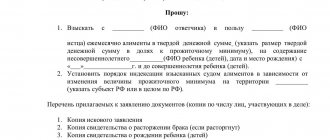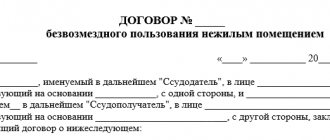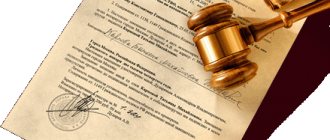In our country, it has historically happened that today many people own plots in CNT (garden non-profit partnerships). These societies are created by dacha owners by making a collegial decision on unified management and electing a chairman. Participants unite in making decisions on emerging issues, everyday and social tasks on the territory related to the partnership.
SNT is an official form of organization that must be registered in order for it to have legal status. The presence of a plot of land in the ownership of a citizen does not imply his mandatory participation in the gardening partnership.
General provisions
The law provides for the possibility of free withdrawal from a gardening partnership at the request of a member. The rights and obligations of partnership participants are enshrined in 66-FZ of 1998. A member of the partnership is obliged:
- maintain the site and bear responsibility for breaking the law;
- timely pay additional contributions for yourself and as a percentage for persons who have not paid them;
- do not cause damage to the site, use it for its intended purpose;
- not violate the rights of other members of the partnership;
- master the object within 3 years;
- fulfill the obligations provided for by law and the organization’s charter.
One of the main reasons for refusing membership in gardening societies is the unwillingness to comply with the rules and charter.
Features of SNT
The tradition of purchasing land for gardening needs appeared in the middle of the last century, and it was then that most of the population acquired dachas. Therefore, when looking for land, you should understand that the contingent in the partnership will be motley. All current and global issues will be discussed and decided at a general meeting, and if old people and young people live nearby, it will be quite difficult to come to a common opinion.
If the association was created recently, then be aware that you will have to install communications and build infrastructure at your own expense, but the cost of the plots is not high when compared with the same DNP. Do not forget that you will have to pay regular membership fees, although such payments rarely exceed 1 thousand rubles.
We consider the consequences of exit, the pros and cons
The law provides for the possibility of joining and leaving the association at the discretion of the owner of the site. Every legal action has its consequences, leaving SNT is no exception. Main consequences:
- an agreement is required for the continued use of common facilities;
- inability to take part in resolving partnership issues;
- there is no need to comply with the charter and decisions of the association’s management;
- no need to pay monthly or additional fees;
- It is impossible to nominate your candidacy for the election of the chairman of the SNT.
Important! No one has the right to prohibit or obstruct the exit of a member of the partnership from the association.
Minuses
The law does not provide for fines or other types of punishment for persons who decide to leave SNT. The main disadvantage of such an event is the need to fully repay debt for all types of services, basic and additional contributions.
A citizen who wishes to withdraw from the partnership must submit an application. The document will not be considered or will be returned to the applicant if debts for fees, water supply, electricity supply and other services are not paid in full.
The inability of a person to participate in SNT decisions can be viewed in both a positive and negative light. On the one hand, a citizen will not be able to become the chairman of the association and his opinion will not matter in decision-making, on the other hand, he has the right to make autonomous decisions that other citizens will not be able to influence.
Public facilities (roads, electricity) are intended exclusively for members of the partnership. Other persons have the right to use only on a contractual basis.
pros
The main advantage of leaving the SNT is the possibility of purchasing the land property. Acquiring ownership of a plot of land allows a citizen to sell it, donate it, bequeath it, and perform any other actions not prohibited by law.
The second most important advantage is the possibility of constructing a capital construction project on a garden plot. In 2021, the dacha amnesty was extended until 2021.
The owner of a land plot has the right to legalize a residential building by providing a minimum of documents. It becomes possible to legally live year-round on a garden plot with permanent registration.
How to draw up a contract
Modern gardening villages are equipped with utilities and networks, this significantly increases the comfort of living and relaxing work in SNT. But it also increases the cost of land .
Connection of utility networks is carried out at the expense of site owners who donate membership and target fees for general needs.
If one of the members wants to leave the ranks of the partnership, he must resolve the issue of using the common property, for which he donated funds.
Such common property includes electrical communications and equipment, water supply and sewerage, gas pipelines, as well as equipped roads. If the site is connected to the systems, no one will want to lose comfort.
In order not to create problems for yourself, it is worth signing a special agreement with SNT:
- The partnership will continue to receive funds from such owner of the site for the maintenance of common property.
- And the owner himself will be able to use it freely.
Thus, a member of the SNT can leave the membership by law and retain the rights to use the property necessary for him . Usually the SNT board provides an agreement for review, but you can draw it up yourself.
ATTENTION! At the general meeting of SNT, an increased tariff for paying for the maintenance of common property for those who are not members of the partnership may be adopted.
If a person does not agree with such a tariff, he has the right to discuss the amount with the board, with the OS, and file a claim in court. When all the provisions of the contract are satisfied, the document is signed by the parties and comes into force.
Termination of the obligation to pay contributions
After leaving the association, all obligations to make any contributions provided for by the SNT charter cease with respect to the citizen. The only type of payment is the amount specified in the terms of use agreement.
After leaving the partnership, the relationship between the association and the citizen has a contractual basis.
A person is obliged to make timely payments under the contract. In case of dishonest fulfillment of the conditions, SNT may limit the possibility of using common property. When large debts accumulate over a long period of time, the head of the association must defend the interests of the partnership in court.
Important! The contract may provide for additional liability for delay. For example, 0.5% for each day.
Application requirements
To the question that is often asked on forums, “I want to leave SNT, what should I do, where should I start?” — the answer is very simple: fill out an application and leave your membership in the partnership.
To confirm the submission of the application, two copies must be made, on one of which the chairman must mark receipt. This option should be left to the applicant.
If there is a conflict with the chairman, then so that there are no questions about how to leave SNT, the application can be sent by mail. Be sure to issue it by registered mail and with notification so that confirmation of receipt of the document remains.
Consequences for the land plot
A plot of land that is part of the SNT is subject to registration in a simplified manner (dacha amnesty). In this regard, most objects are already owned by their users.
A plot of land for which documents have not yet been drawn up may become the property of a citizen after leaving the association. To do this, you need to contact the chairman of the SNT and draw up an agreement on the procedure for transferring the site into the ownership of the user.
Important! The law does not provide for the possibility of refusing to transfer a plot or hindering its registration.
Step-by-step instruction
Step 1
Preparation for registration of the newly elected chairman of the SNT begins with the general meeting of its members, namely with the keeping of the Minutes. It makes no sense to describe the re-election procedure itself - it goes differently for everyone, depending on the temperament of gardeners and gardeners. Somewhere they silently agree with the nominated candidate, so as not to be held accountable themselves. And somewhere, on the contrary, they go wall to wall, rejecting the candidate proposed by the Board and promoting their own. Whatever the outcome of the meeting, two points are important:
- 1. 50% of the total number of SNT members must be present;
- 2. The decision to re-elect the chairman is made based on the consent of the majority of voters.
Let's return to the Protocol. This is an official legally binding document. Despite the fact that there is no single form for this document, it must be filled out in accordance with the requirements of Federal Law No. 217.
How to leave SNT. Grounds
Exit from the association may occur on the following grounds:
- voluntarily (at the request of the SNT member);
- forcibly (for reasons provided for in the charter).
To voluntarily leave the partnership, a citizen must draw up an application and submit it to the chairman. Refusal to accept or satisfy a request is not provided for by law. From the next day, contractual relations begin between the citizen and the association.
The reasons and rules for forced exit are provided for in the charter. The main reason is the violation of current legislation. Violations must be intentional and systematic. Upon receipt of an order to eliminate violations, the person refuses to comply with it.
Expulsion of one of its members
At the first general meeting, gardeners adopt the charter of the partnership. It must define all the rules of activity of the association, including punishment for violation of the charter and general rules. The partnership may exclude the owner of the land from its membership in the following cases:
- When he violates the current legislation relating to the sphere of SNT.
- When violations in the behavior of such a person are regular, they cause problems for other people.
- In the case where a member of the partnership was given an order to eliminate violations, but he ignored this order.
Decisions on exclusion are made at the general meeting and entered into the minutes after voting.
Procedure for voluntary withdrawal from the partnership
The law does not provide for a special procedure for leaving the SNT, so it must be prescribed in the charter. General order:
- calculation of debt on basic and additional contributions, electricity;
- payment of the debt in full;
- drawing up an application;
- provision of the document, together with payment receipts, to the chairman of the association.
When leaving the partnership, the citizen must simultaneously resolve the issue of the share in the common property acquired with additional contributions.
He can receive his part in cash or offset against payments under the agreement for the use of common property.
Forced termination of membership
Despite the voluntary nature of membership, situations are identified in which termination of participation in the SNT may become a forced procedure.
Notice! The following cases include:
- failure by the participant to comply with the rules established by the Charter of the partnership;
- the participant has used the land inappropriately and has not addressed the contributing factors;
- violations by a member of the SNT are regular and intentional;
- if a person was required to eliminate deficiencies, but he did not comply with the specified order.
There may also be other reasons for exclusion from the SNT, if they affect the interests of other participants.
Quit Statement
Application rules:
- the document is drawn up in two copies;
- an application for withdrawal from SNT is drawn up in free form;
- the release date must be indicated;
- a draft agreement for the use of common property is requested;
- one copy is transferred to the secretariat, the second is marked with receipt.
If the secretary refuses to accept the application, the document is sent in writing by mail with notification. Priority must be given to registered mail.
Sample
The law does not define a special form of the document. Let's consider an example option:
In the upper right corner:
- name of the governing body or position and full name. chairman of the association;
- applicant's details (full name);
- land plot number.
Statement
- request for exclusion from the SNT;
- list of actions required to be carried out in case of exclusion;
- release date;
- date of document preparation, signature.
Actions required upon leaving the association include:
- calculation of the share in the common property of the partnership;
- conclusion of an agreement;
- debt reconciliation.
The application must provide realistic deadlines for the implementation of these actions, if they are not established by the charter.
Leaving SNT has its pros and cons. In fact, these actions have minimal consequences. Exemption from contributions is compensated by payment under the contract. The maximum amount of contractual expenses cannot exceed the amount of monthly payments. The possibilities of a member of the SNT and the owner of a land plot who is not a member of the partnership are almost identical.
SNT is an association in which citizens can participate only on a voluntary basis. Therefore, the owner must make the final decision independently.
Your rating of the article
Recommendations for drafting the Protocol
On websites devoted to the organization and life of gardening partnerships, you can find many proposals from the Minutes of the General Meeting. As a rule, they are identical to each other and contain the following information:
- Serial number of the document;
- Place and date of the meeting;
- Form of conduct;
- Full address where the meeting took place;
- Start and end time of the event;
- List of those present. Indicate the last name, first name, patronymic, passport details, place of registration of the meeting participant;
- Availability of quorum;
- Agenda. Consists of a list of questions for discussion. The first question, as a rule, is the choice of the chairman of the general meeting and the secretary.
- Consideration of issues and decisions made. For each question the following is recorded:
all speakers and their proposals,
- the decision put to vote
- Voting results,
- decision made on the issue.
The Chairman of the General Meeting and the Secretary sign the Protocol. Particular attention must be paid to the formalization of the issue of choosing a new chairman of the SNT. Must be specified in full:
- last name, first name, patronymic of the person selected for the position;
- passport details of the chosen comrade;
- the term for which the chairman is elected.
When the meeting is over and everyone has gone to their beds, the complete package of protocol documents should look like this:
- minutes of the general meeting,
- general list of all members of the partnership,
- a list of gardeners and gardeners who attended and voted at the meeting,
- voting papers,
- registration sheets for meeting participants.
Step 2
This is a very simple, even formal stage, if the new chairman of the SNT was elected peacefully, and the previous leader voluntarily surrendered his positions, table and seal. Accordingly, he hands over all the necessary papers for further work to his successor. The list of Statutory documents of SNT, which will be needed to register a new chairman with the Federal Tax Service, is approved in Article 5 of the Federal Law of 08.08.2001 No. 129-FZ “On State Registration of Legal Entities and Individual Entrepreneurs”. Among them: the Charter of SNT and the Certificate of registration with the Federal Tax Service (OGRN, INN, KPP). It is important to get your hands on the originals!
Step 3
Get an Extract from the Unified State Register of Legal Entities. This document is issued by the territorial tax office and costs money. Gardening partnerships in which the re-election of the chairman is planned, as a rule, order the Extract in advance. Its validity period is 30 days. Of course, you can receive the paper in your hands the day before submitting documents for registration, but you will have to pay more. In 2019, the amount of the state duty for the Extract of the Unified State Register of Legal Entities was:
- 200 rubles when registering in the general manner,
- 400 rubles for urgent processing.
Step 4
>
The most difficult step to perform. You must fill out an application to make changes to the Unified State Register of Legal Entities. The application form is approved by law - this is form No. P14001.
The template on the Federal Tax Service website consists of 51 pages. But not all of them need to be filled out. Information is entered where changes have occurred. Unfilled sheets are not submitted to the tax office. Here are a few rules to follow when filling out:
- Write in capital letters
- Use black pen or ink
- Error correction is not allowed
If the application will be generated on a computer:
- Use capital letters size 18
- Font — Courier New
- Double-sided printing of the application is not allowed
The completed application must be signed by the new chairman of the board himself.
Step 5
The signature of the SNT chairman must be notarized. The notary also enters data into the section that he must fill out himself.
It is difficult for an inexperienced applicant to independently and quickly understand the intricacies of filling out. Advice from experienced people - you need to fill out and double-check the entered data in advance and together with an SNT accountant (preferably an experienced one). Just in case, have blank forms with you. In case of an error that may be discovered by the tax office, you will have to re-certify a new application with a notary. And this means wasted time, wasted money and frayed nerves.
Fines for gardeners and the fight against debtors
The new law does not oblige gardeners to demolish capital buildings if they were erected and registered before the entry into force of Federal Law No. 2021. Also, owners of plots in the DNP should not worry about the exclusion of the legal concept of “dacha” from legislative documents.
Previously in the Russian Federation there were 9 forms of association of citizens owning land plots (various cooperatives, partnerships and partnerships), now there are only 2 left: SNT and ONT. This means that all other associations will be renamed, the content of the charters of organizational and legal forms will gradually change.
We can say that land owners will not “feel” serious changes due to the transfer of DNT to SNT or ONT, because they will not have to make any changes to the title documents for the house and land.
- an agreement is signed with the withdrawing participant, which regulates further relations between the parties;
- payment of membership fees stops;
- there is no opportunity to take part in the internal affairs of the partnership;
- you no longer need to obey the rules established in the SNT and the decisions of the partnership;
- loss of the opportunity to be selected to the management.
Electricity in SNT: how to switch to a direct contract with energy sales?
13.04.2021
Light / Electricity in SNT
How can a member of a gardening association start paying for electricity directly to the energy sales tariff and stop depending on their SNT for electricity supply? These kinds of questions regularly come from visitors to our site. Below are explanations on this matter with links to regulatory documents and examples from judicial practice.
Why are SNT members switching to direct contracts with the electricity supplier?
Why do members of SNT, as well as citizens operating on their site within SNT on an individual basis (the so-called “individuals”), strive to switch to direct contracts with energy sales? The answer is obvious.
Firstly, in many cases, the payment for electricity to the SNT cash desk turns out to be higher than the official electricity tariff approved in a given region for the population. The fact is that the gardening partnership needs to pay for losses in its networks (including those arising due to the theft of electricity), compensate for electricity costs for general needs, and finance maintenance and repairs of the energy sector.
In a good way, these payments should be separated from the payment for electricity itself. However, in many cases, light fees are billed to gardeners as a lump sum. And the price per kWh. turns out to be much higher than the “official” tariff.
The transition to a direct contract with energy sales solves this problem. The payment for light, calculated according to the official tariff, is transferred to the sales organization. The remaining payments (for losses in networks and expenses for general needs) are charged in the form of separate contributions. The situation becomes clear and transparent.
Secondly, by paying for electricity through the SNT cash register, conscientious members of the partnership (i.e., those who do not have debts for electricity) find themselves “hostage” with their neighbors - “defaulters”. After all, if SNT as a whole accumulates a large debt to the electricity supplier, then the energy supply company has the right to stop supplying energy to the partnership until the debts are repaid. Accordingly, in order for the power not to be turned off to all SNT members, those who pay have to pay even more. Both for yourself and for those who do not pay for electricity.
The transition to a direct contract with energy sales solves this problem. If the owner of a plot within the territory of SNT has concluded a direct agreement with the sales company and there is no debt under it, then the sales company has no right to deprive him of power supply. No matter what happens between SNT as a whole and energy sales, and no matter what debts the energy sector accrues to the partnership.
Direct contract with energy sales for a member of SNT. What does the legislation say?
The procedure for terminating and concluding energy supply contracts is described in Decree of the Government of the Russian Federation No. 442 of May 4, 2012 “On the functioning of retail electricity markets, complete and (or) partial restrictions on the consumption of electrical energy.” More precisely, in the “Basic Provisions for the Functioning of Retail Electricity Markets” (abbreviated as OPFRR), which were approved by Resolution No. 442. Link to the current version of the document: https://base.garant.ru/70183216/
In particular, clause 34 of the OPFRR provides a list of documents that a person wishing to enter into an energy supply agreement must provide. This list includes:
— Identity document
— Documents confirming ownership of the “energy receiving device” (i.e. residential building or non-residential building)
— Documents confirming the technological connection of the power receiving device to the power grid
— Documents confirming the approval for operation of the metering device (if available)
At first glance, everything is simple; you need few documents. But there is a problem. It consists in the fact that documents confirming that the house (site) in SNT is connected to the power grid and the electricity meter is working must be issued by the board (or chairman of the board) of the partnership. We are talking about:
— act on compliance with technical conditions for connection to electrical networks,
— act of technological connection,
— the act of putting the metering device into operation.
And SNT simply may not have such documents. Due, for example, to the fact that the partnership was electrified several decades ago, when other requirements were in force. However, documents may also not be issued due to the reluctance of the “authorities” of the partnership to release SNT members to direct contracts.
After all, the number of obligatory payers for electricity to the SNT cash desk is decreasing, and the share of “non-payers” is growing. Accordingly, the “hole” between actual fees for light and the necessary payments to energy sales is increasing. Therefore, the board (chairman) of the partnership can simply ignore requests from members to issue documents necessary for concluding a direct contract.
However, since April 2021, an addition has been made to clause 34 of the OPRFF, according to which acts confirming connection to electrical networks can be replaced by another document. For example, a certificate confirming that a citizen wishing to enter into a direct energy supply contract was a member of SNT at the time of electrification of the partnership.
Or any document can be provided that the SNT member is currently receiving and paying for electricity. As such, a regular payment card from SNT can be used. This norm is formulated in the eighth paragraph of clause 34 of the OPRFF.
In this case, SNT is required only to provide a certificate of commissioning of the metering device. This document is much easier to obtain. For example, it is required to be issued when replacing an old meter with a new one.
Thus, the legislation as a whole is on the side of the SNT member who wants to switch to a direct energy supply agreement. The algorithm is simple: a member of the SNT collects the package described above with the document and applies it to the energy sales office. The energy company, in turn, having received the documents, is obliged to enter into a direct energy supply agreement.
But what if difficulties arise along the way? Let's look at a few examples from judicial practice.
Direct energy supply contract for a member of SNT. Three examples from judicial practice
Example 1. In the Chita region, the owner of a land plot and a house on the territory of SNT “Geodesist” contacted the local energy sales office with an application to conclude a direct energy supply agreement. To accompany the application, he offered the documents required by law - an act on the implementation of specifications for connection to electrical networks, an act on the execution of the technological connection itself, and an act on the commissioning of the metering device, which is used to calculate the consumed electricity.
However, energy sales refused to conclude a direct energy supply agreement. Then the owner of the site filed an application with the court demanding to oblige JSC Chitaenergosbyt to enter into a direct agreement with him, as well as to pay compensation for moral damage in the amount of 50 thousand rubles.
The court, having considered the case, ordered the energy supply company to enter into a direct energy supply agreement. However, he refused to pay compensation. The solution to the case is available at the link: https://sudact.ru/regular/doc/HrPSLbxIklVR/.
Example 2. In St. Petersburg, the owner of a house and garden plot located on the territory of SNT “Green Noise” in the Leningrad Region filed a lawsuit against JSC Rusenergsobyt. In her statement of claim, she demanded that Rusenergosbyt be obliged to conclude a direct energy supply agreement with her. Previously, the energy company refused her this, citing the lack of a commissioning certificate for the electricity meter installed on the border of the land plot.
The court, having considered the circumstances of the case, agreed with the position of Rusenergosbyt. The judge refused to “force” the energy company to enter into a direct energy supply agreement, as the plaintiff demanded. The court decision can be viewed at the link: https://sudact.ru/regular/doc/XrFg6elvQwlm/.
Example 3. A resident of the Vladimir region, who owns a plot of land and a house on the territory of the Ozerki SNT, filed a lawsuit demanding that the board of the partnership be obliged to issue her the documents necessary to conclude a direct energy supply contract.
Prior to this, her attempts to obtain the necessary documents from the SNT board, namely, acts on technological connection to power grids and balance demarcation of power grids, were unsuccessful. SNT did not provide such documents.
Later in court, the representative of the partnership argued his position by saying that during the electrification of SNT in 1994, no technical conditions were issued to SNT members, and accordingly, there are no acts on their implementation. Nor does it have acts of technological connection of individual gardeners’ power receiving devices to SNT networks. Therefore, they cannot be issued.
The court, however, did not accept these explanations. SNT was obliged to provide the plaintiff with the documents necessary to conclude a direct energy supply contract. The full court decision can be viewed here: https://sudact.ru/regular/doc/DG46BV2DAd6r/.
It is difficult to say how this decision was implemented. However, it is worth clarifying that it was issued in June 2021.
And in November of the same year, norms in the legislation came into force, which (as mentioned above) made it possible to confirm the presence of a valid connection to electrical networks with certificates of membership in SNT during the period of electrification of the partnership or other documents (up to payments for light) confirming Availability of power supply to the site (garden house).
Statement (complaint, proposal) to the chairman of the SNT, DPP (or organization in general)
(Facts that the applicant wants to convey to the chairman of the board, with dates of events and evidence). Example 1: In 1984, my husband was accepted as a member of SNT, allocating plot No. 15 on Zarechnaya Street for use.
Together with him, I (my wife) and two children are included in the membership book, taking into account which a plot of land measuring 15 acres was provided. Now my husband and I are divorced.
(Facts that the applicant wants to convey to the chairman of the board, with dates of events and evidence). Example 2.
Due to the dilapidation of the public well, I ask that the cost estimate for 2021 include the repair of the public well on Zarechnaya Street and carry out the necessary work. Required materials: 2 rings, 3 cubic meters.
gravel, clay screed, boards for arranging the approach to the well.
Rights to the site and public lands
Gardeners should not worry: the rights to the land and all buildings on it will still remain with the owners. But after the liquidation of SNT, public lands will have to be dealt with separately. According to clause 2 of Article 28 of Federal Law No. 217-FZ, upon liquidation of the partnership, all property owned by SNT is transferred free of charge to the common shared ownership of the owners of the land plots.
As the owner of public land, you will have to independently remove garbage, develop the territory, and clean roads. To avoid this obligation, owners can transfer public lands to the municipality. This possibility is provided for in clause 8 of article 25 of Federal Law No. 217.
Have you ever experienced delays in child support payments?
Not really









